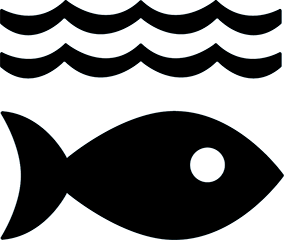Seismic crustal imaging technique from Oregon State University uses fin whale songs to map subsurface layers.
Benefits
- Increased seismic wave detection
- Non-invasive
Applications
- Oceanic mapping
- Natural disaster mitigation
UN Sustainable Development Goals Addressed
-

Goal 14: Life Below Water
-

Goal 15: Life on Land
The Challenge
Mapping out the density of ocean crust is a vital part of exploring the seafloor, and also helps researchers to better understand and predict earthquakes. The traditional method of imaging the oceanic crust involves the use of air guns. However, these guns are expensive, can be harmful to marine life, and can be difficult to obtain permits to use.
Innovation Details
Fin whales produce loud sounds known as ‘songs’ to communicate with one another. These sounds bounce between the ocean surface and ocean bottom. Part of the energy from these calls travels through the ground as seismic waves, which move through the oceanic crust and are reflected and refracted by the ocean sediment. These waves can be recorded by a seismometer, which allows researches to estimate the map and structure of the crust. This information can be used to learn more about earthquakes and ocean sediment movement, since earthquakes are known to move and shake up the sediment. Although the data from fin whale calls is of lower resolution than using traditional methods and does not replace them, it does enable researchers to survey areas that are deeper and more difficult to reach.
Biological Model
Fin whales produce sounds known as ‘songs’ to communicate with one another. They are some of the loudest sounds in the ocean, sometimes reaching up to 189 decibels, similar to a large ship.





